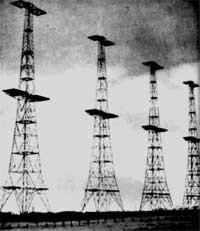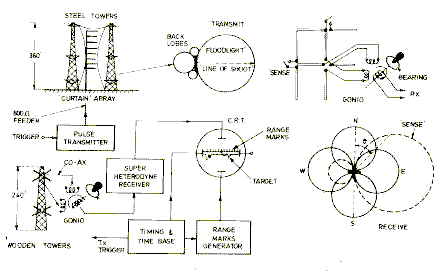 |
 |
The Sun has of course been emitting radio signals for a very long time. But the first detection of solar radio bursts recognised as such were made during the second World War.
The British Army had established a radar network called the Chain Home system to detect and locate incoming German aircraft. This operated at frequencies between 20 and 70 MHz. In 1942 strong interference was encountered which operators first suspected might be jamming signals transmitted by the Germans.
The physicist James Stanley Hey eventually solved the problem. Hey joined the Army Operational Research Group after a 6-week course at the Army Radio School. He was then assigned to work on radar anti-jamming methods.
 |
 |
Hey collected the reports of the severe radar jamming encountered by the radars in February 1942 and noted that the jamming began when the Sun rose and ceased when it set. He contacted the Royal Observatory and found that a large sunspot group was present at this time on the solar disc. He concluded that the jamming signals were solar radio bursts related to streams of energetic ions and electrons emitted in magnetic fields around the sunspots.
The knowledge of these intense solar radio bursts remained a secret throughout the war, although later that year (1942) in the USA another physicist, GC Southworth, detected thermal emission from the Sun at microwave wavelengths. This was much weaker than the bursts Hey had reported on.
After the war, in 1946, Hey again looked at radio emissions from the Sun and found that intense bursts were often associated with solar flares observed at hydrogen alpha wavelengths.
 Australian Space Academy
Australian Space Academy